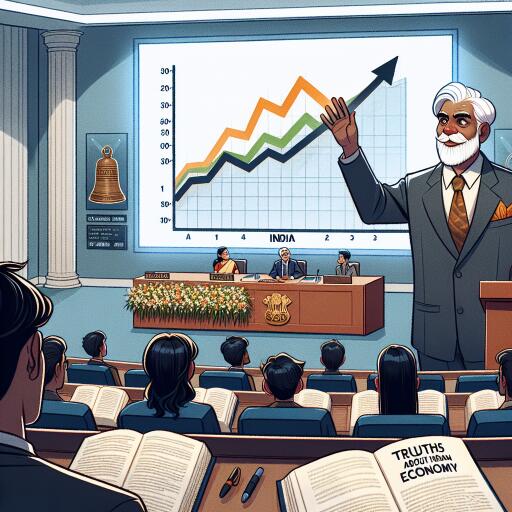Former RBI Governor Subba Rao Rings The Bell On Why We Can’t ‘Celebrate’ Yet On Becoming The 3rd Largest Economy; Truths About Indian Economy That Need Close Scrutiny
As India is on the verge of becoming the third-largest economy globally, with projections indicating a jump to a $5 trillion GDP in the next three years and potentially reaching $7 trillion by 2030, excitement buzzes around its economic corridors. These forecasts suggest India not only overtaking Japan and Germany but also firmly establishing its place as the second-largest economy in Asia-Pacific.
Analysts from Morgan Stanley to Forbes have weighed in, citing India’s robust growth rate, its burgeoning tech and innovation sectors, and the potential for large unicorn listings as key factors in this trajectory. Yet, amidst the optimism, Dr. Subba Rao Duvvuri, the former Governor of the Reserve Bank of India, offers a critical perspective that tempers the celebratory mood.
During the 14th India Investment Conference hosted by CFA Society India, Dr. Rao shared insights into the immediate and long-term economic challenges India faces. While acknowledging the country’s monumental growth—from the 10th largest to the 5th largest economy—Dr. Rao underscored the stark contrast between India’s GDP and its per capita income, which remains at $2,700, ranking it as one of the poorest countries globally.
Population and Economic Growth
India’s vast population, now the world’s largest, contributes to its significant economy size. Yet, Dr. Rao questions the sufficiency of India’s current and projected growth rates. He points out that for India to reach developed country status, with a per capita income akin to $27,000, it would need to maintain a growth rate of 7.6% annually for over two decades.
Comparing India’s progress with that of China reveals a significant gap in economic advancement and growth quality. Despite starting at similar economic stages in 1990, China has leapt ahead, becoming the manufacturing and trading behemoth of the world, whereas India’s manufacturing sector trails with a share in single digits.
Infrastructure Development and Innovation
Dr. Rao attributes China’s economic success in part to its substantial investments in infrastructure and innovation, areas where India still lags. He highlights the need for India to significantly increase its research and development spending and to foster a supportive ecosystem for innovation and startups.
Moreover, disparities in education, particularly in STEM fields, have resulted in a workforce that may not fully meet the demands of a modern economy. To harness its demographic dividend effectively, India must prioritize enhancing education and vocational training.
Quality of Growth: Addressing Inequality and Unemployment
One of Dr. Rao’s critical concerns is the dual challenge of inequality and unemployment. With unemployment rates hovering around 8-10% and even higher among youths, coupled with an enormous and growing population, he questions whether manufacturing alone can provide the necessary job opportunities.
The former RBI Governor also emphasizes the importance of tackling high levels of inequality, noting that such disparities can reduce overall consumption and, by extension, harm economic growth. Furthermore, he advocates for the expansion of the services sector to create more high-paying jobs, highlighting the critical disparity between urban and rural growth rates in India.
Global Influence and Trade Policies
As India aspires to elevate its geopolitical standing, Dr. Rao suggests that it must strive for consistent diplomatic efforts and strategic partnerships. Crafting trade policies that foster new markets and strengthen trade relationships through active participation in regional trade agreements will be essential for enhancing India’s economic and geopolitical influence.
In conclusion, while the forecasts for India’s economy spark optimism, Dr. Subba Rao Duvvuri’s insights remind us of the underlying challenges that need addressing. Addressing poverty, unemployment, inequality, and ensuring that growth benefits are widely shared are critical for India not just to rise as an economic powerhouse but to improve the quality of life for its vast population. Thus, the journey towards becoming the third-largest economy is not just about celebrating milestones but also about persistent and inclusive efforts towards sustainable growth.
